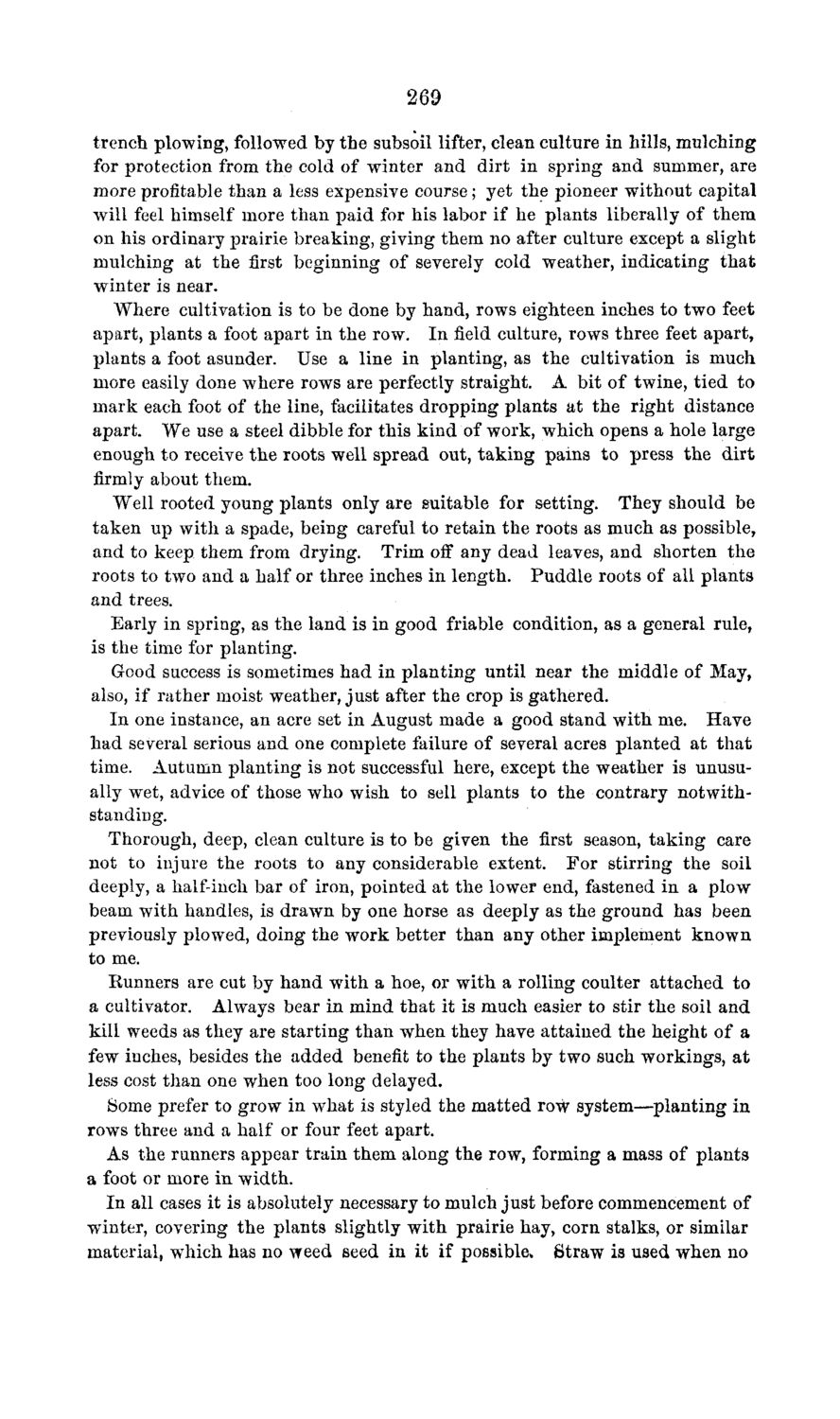| |
| |
Caption: Board of Trustees Minutes - 1869
This is a reduced-resolution page image for fast online browsing.

EXTRACTED TEXT FROM PAGE:
269 trench plowing, followed by the subsoil lifter, clean culture in hills, mulching for protection from the cold of winter and dirt in spring and summer, are more profitable than a less expensive course; yet the pioneer without capital will feel himself more than paid for his labor if he plants liberally of them on his ordinary prairie breaking, giving them no after culture except a slight mulching at the first beginning of severely cold weather, indicating that winter is near. Where cultivation is to be done by hand, rows eighteen inches to two feet apart, plants a foot apart in the row. In field culture, rows three feet apart, plants a foot asunder. Use a line in planting, as the cultivation is much more easily done where rows are perfectly straight. A bit of twine, tied to mark each foot of the line, facilitates dropping plants at the right distance apart. We use a steel dibble for this kind of work, which opens a hole large enough to receive the roots well spread out, taking pains to press the dirt firmly about them. Well rooted young plants only are suitable for setting. They should be taken up with a spade, being careful to retain the roots as much as possible, and to keep them from drying. Trim off any dead leaves, and shorten the roots to two and a half or three inches in length. Puddle roots of all plants and trees. Early in spring, as the land is in good friable condition, as a general rule, is the time for planting. Good success is sometimes had in planting until near the middle of May, also, if rather moist weather, just after the crop is gathered. In one instance, an acre set in August made a good stand with me. Have had several serious and one complete failure of several acres planted at that time. Autumn planting is not successful here, except the weather is unusually wet, advice of those who wish to sell plants to the contrary notwithstanding. Thorough, deep, clean culture is to be given the first season, taking care not to injure the roots to any considerable extent. For stirring the soil deeply, a half-inch bar of iron, pointed at the lower end, fastened in a plow beam with handles, is drawn by one horse as deeply as the ground has been previously plowed, doing the work better than any other implement known to me. Runners are cut by hand with a hoe, or with a rolling coulter attached to a cultivator. Always bear in mind that it is much easier to stir the soil and kill weeds as they are starting than when they have attained the height of a few inches, besides the added benefit to the plants by two such workings, at less cost than one when too long delayed. Some prefer to grow in what is styled the matted row system—planting in rows three and a half or four feet apart. As the runners appear train them along the row, forming a mass of plants a foot or more in width. In all cases it is absolutely necessary to mulch just before commencement of winter, covering the plants slightly with prairie hay, corn stalks, or similar material, wThich has no weed seed in it if possible* Straw is used when no
| |